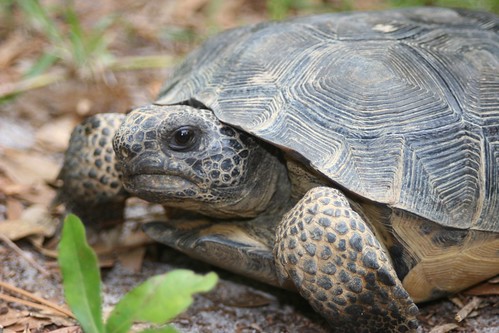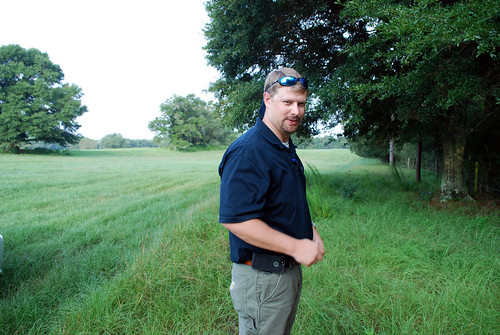
Longleaf pine forests once dominated the Southeast. But over the past two centuries, many of these forests have disappeared along with the wildlife that called them home. Recent efforts to enhance longleaf forests on private lands are helping the ecosystem rebound as well as wildlife like the gopher tortoise.
The gopher tortoise is a keystone species of the longleaf forest, known for their deep burrows that provide vital habitat and shelter for not only itself but many other species. The gopher tortoise is listed as threatened under the Endangered Species Act in the western part of the longleaf range, including parts of Alabama, Mississippi and Louisiana.
USDA’s Natural Resources Conservation Service (NRCS) is targeting conservation work in the Southeast to restore gopher tortoise habitat. Eighty percent of the gopher tortoise range is on private lands, making these conservation efforts essential to the future of the gopher tortoise.
In Alabama, NRCS has improved more than 50,000 acres of habitat in Mobile County since 2012.
The signs of success are everywhere – dozens of active gopher tortoise burrows on private lands where NRCS has worked with landowners to restore longleaf forests. Through the Environmental Quality Incentives Program (EQIP), NRCS helps landowners pay for the costs of restoring and maintaining healthy longleaf forests.

“Mobile County strives to protect the gopher tortoise through our gopher tortoise and longleaf initiatives,” said Bradley Williams, NRCS soil conservationist for Mobile County. “Through these focused efforts, we are able to put practices on the ground that help enhance the gopher tortoise habitat. With the removal of invasive plant species and reestablishment of the longleaf habitat, we hope that the gopher tortoise will continue to thrive in our area.”
Williams has been working in the Mobile office since 2013 and conservation plans involving gopher tortoise habitat have been a big part of his job. Forest landowners Bob and Carol Pittman have made it their mission and the focus of their conservation plan to enhance gopher tortoise habitat on their property. They use conservation practices like prescribed burning, installation of fire breaks and weed control to encourage the growth of longleaf pine trees and the native understory that make up the longleaf ecosystem.
“We do everything we can to protect them, and we wish more people would do the same,” Bob Pittman said.
The Pittman family is so passionate about the gopher tortoise, they have even hosted about 12,000 fifth-graders, sixth-graders and volunteers over the past decade to teach them about the importance of gopher tortoises and conservation practices like prescribed burning.
Through the Working Lands for Wildlife (WLFW) partnership, NRCS is able to provide assistance as well as regulatory predictability under the Endangered Species Act (ESA) to landowners who implement NRCS-prescribed conservation practices. Additionally, NRCS’ Longleaf Pine Initiative (LLPI) complements habitat restoration gopher tortoise. Since 2010, more than 260,000 acres of habitat have been restored in the Southeast, including more than 126,000 acres of prime gopher tortoise habitat in Alabama.
The gopher tortoise is not the only wildlife species benefiting from conservation efforts on private lands.
Recently, because of voluntary steps by private landowners to restore and improve habitat, the U.S. Fish and Wildlife Service determined that Endangered Species Act listings were not required for the New England cottontail, greater sage-grouse, Bi-State sage-grouse and Arctic grayling; proposed the delisting of the Louisiana black bear; and delisted the Oregon chub, the first fish in U.S. history to be delisted, in part because of success of these efforts.
Learn more about NRCS’ wildlife conservation efforts. To get started with NRCS, visit your local USDA Service Center or www.nrcs.usda.gov/GetStarted.


